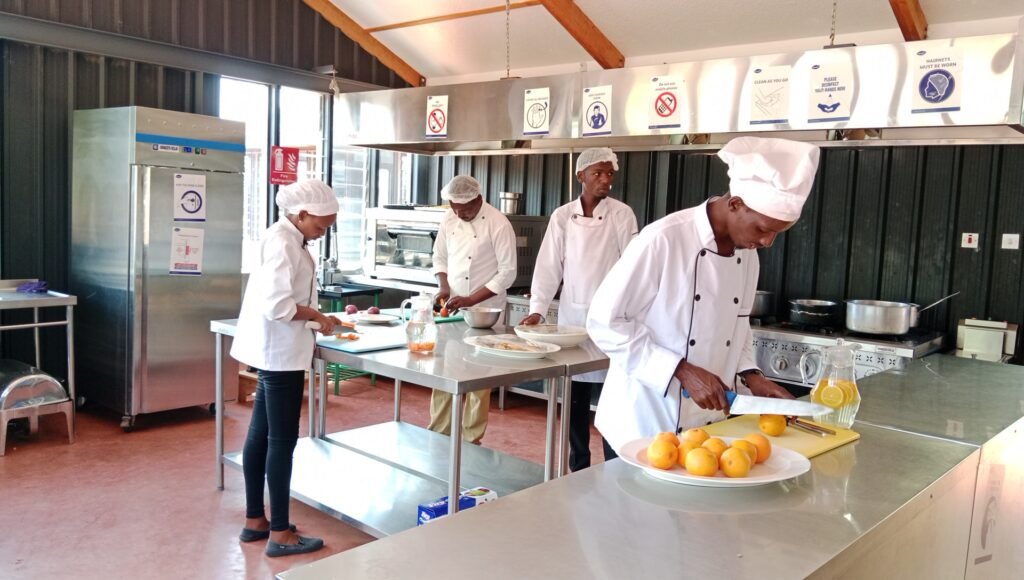By George Sayagie
Establishment of Wildlife Tourism College in Masai Mara heralds a new era of empowerment for local youths in Narok County
It’s a new dawn for tourism as the first-ever Wildlife Tourism College(WTC) is set to be launched mid this month in Maasai Mara, Narok County.
The college, formerly Koiyaki Guiding School before remodelling itself to a full-fledged Technical and Vocational Education and Training college, is at the heart of the tourism cradle, the Pardamat Conservation area in Narok West sub county.
President William Ruto is scheduled to inaugurate it on March 17, marking a significant milestone in the journey to drive growth in the tourism industry.
Strategically positioned at the heart of the Maasai Mara tourism hub, the college holds immense potential for aspiring professionals seeking careers in the vibrant tourism industry.
It will also be a game changer for the local Maasai youths eyeing hospitality, tourism and wildlife management courses.
The principle of WTC Moris Nabaala said the college, which was established in 2005 and has managed to train over 300 graduates, opened its doors on May 4, 2023 for the first 40 pioneer students taking various Diploma/Certificate courses in Environmental Management, Wildlife Management, Front Office operations, Tour Guiding, House Keeping and Laundry.
“The college relocated from Naboisho community conservancy due to limited space for expansion to the current location-Pardamat-conservancy-which is more spacious,” he said.
Mr Nabaala added that the college will also push up women empowerment agenda while elevating the local community through tailored courses on conservation sustainability projects, fostering inclusivity and community involvement.
“The main agenda of the college was to fuse Wildlife conservation and tourism as well as to instil the trainees’ skills on combating climate change in the Maasai Mara landscape and would go a long way in ensuring that the local Maasai youth attain employable skills suitable for the hospitality industry,” said Nabaala.
The WTC’s operations manager Geoffrey Ouma said the college will also undertake tailoring courses for the local women on conservation sustainability projects.
“The trainees get to be equipped with knowledge on flora and fauna found in the Maasai Mara Ecosystem and share them with tourists,” said Ouma.
An instructor at the college Peterson Kariuki, said the Maasai community was Wildlife conserving community making the establishment relevant for young people.
Kariuki added that the presence of the college has also boosted the attitude by the community towards Wildlife conservation and tourism.
WTC now has beneficiaries, with alumni like Sane Nabaala attributing their career success and changed perspectives on wildlife to the invaluable education received at the college.
Nabaala, a tour guide by profession said about 95 percent of the school’s alumnus are employed in various tour companies.
He said that through the college he turned out to be a Wildlife Conservator by heart and has facts on wildlife on his fingertips.
“My training here has changed my thinking on wildlife as a Maasai Moran, that I can attest that 20 lions can be able to feed many families through tourism revenue, while several herds of cows only serve the family that owns them,” Nabaala, who was on a game drive with several tourists atop the 4 by 4 land cruiser, told the writer.
He said the school has changed his views on the importance of wildlife, conservation and protection of the Mara flora and fauna terming the school as the best thing that ever happened to the Maa community.
The college is backed by community and partners, including MMWCA, Basecamp Explorer Foundation Kenya and the Kenya Wildlife Conservancies Association.
According to Nick Trent, who is the CEO of the Basecamp Explorer Foundation (BCEF)-Kenya, an organisation focused on supporting conservation efforts in the Maasai Mara, especially the Pardamat Conservation Area (PCA), the construction of the college and its ongoing operations have been made possible through the combined support of funding partners.
“Our funding partners who made this project possible include the Baggins, Summa Foundation, LGT Venture Philanthropy, AKO Foundation, Norwegian Agency for Development Cooperation (NORAD), Else & Helge Lund, Rising Tide Foundation and KR. Sand Dyrepark. The architectural design was carried out pro bono by Bull Arkitekter and Mellbye Arkitektur Interiør,” said Trent.
Trent is inspired by challenges that include climate change, population explosion and unplanned urbanisation, high cost of living, and lack of employment are threatening the balance of past years.
He noted that the purpose of the college is to provide top-level skills and experience in relevant skills that will place the graduating students in the best possible standing to go out and join the local workforce.
“One of the core interests of the Foundation is to promote and expand what we call ‘Conservation Education’. When we support the education of local communities, we emphasise on education directly interconnected with the environment, wildlife, natural resources and stewardship of the valuable resources around us,” he said.


